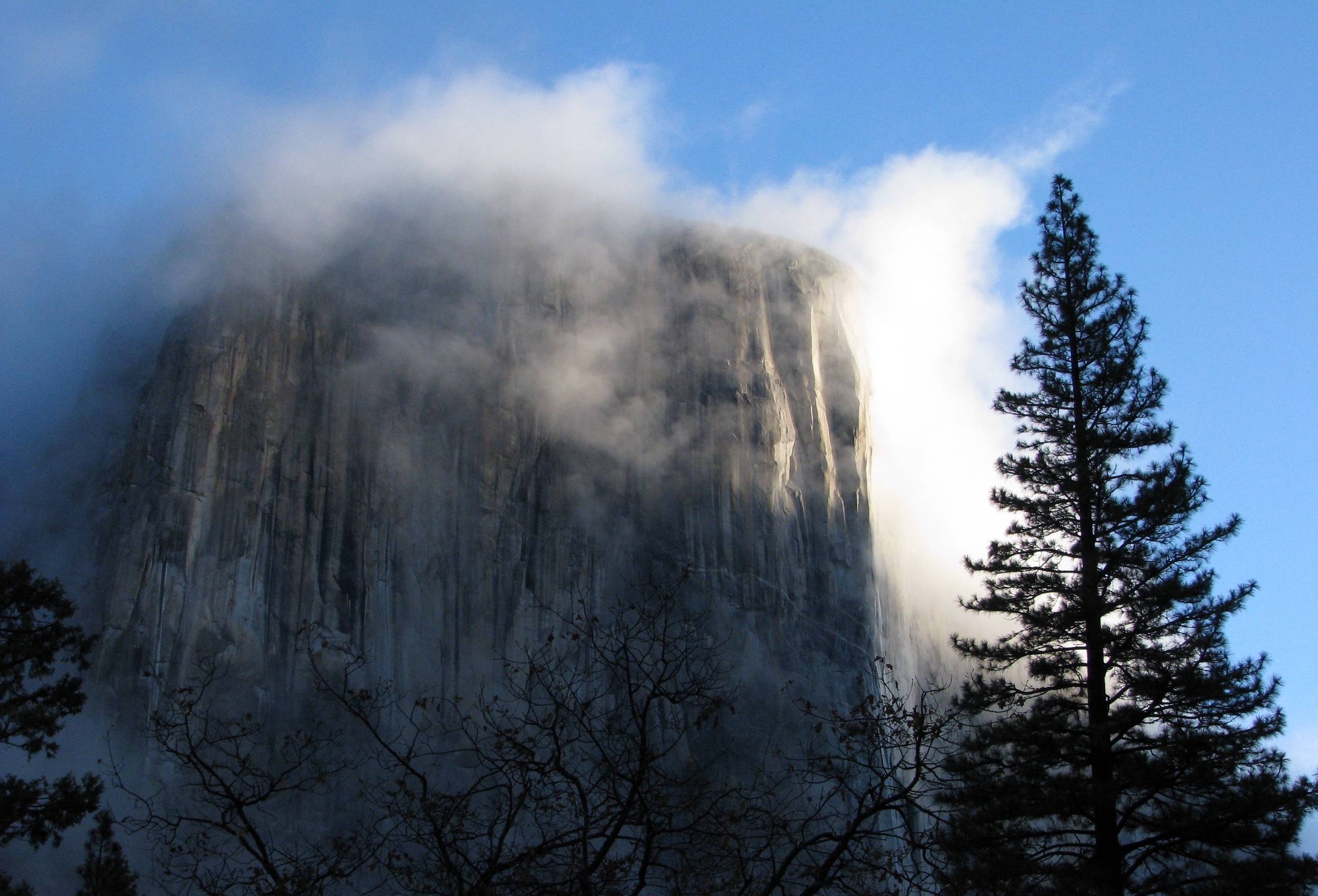These days, a free ascent — all upward progress with hands and feet only, no hauling on gear — of Yosemite’s El Capitan is no longer super rare. But two climbers recently pulled it off in a style that’s still unique.
On April 10, Brent Barghahn and Amity Warme walked up to El Capitan at midnight, and then simply started climbing up. On the “Freerider” above (5.13a, 32 pitches, 3,300 feet), nothing awaited them except the unknown — no food, water, gear stashes, no previously scouted sections, and no opportunity to rest, recover, or retreat through conventional means.
Due to the increasing performance standard of climbing at large, free ascents of El Cap are no longer particularly elusive. But free ascents, in less than 24 hours, in a proper “ground-up” style are.
View this post on Instagram
El Capitan Logistics: A Steep Challenge
Planning, logistics, preparation, and even rehearsal almost always play into an El Cap climb. For most climbers, the wall is just too big and complicated to take on without intensive mission briefing. Usually, that translates to multiday ascents with nights spent in portaledges.
Sometimes, climbers hoping to free El Cap rappel in from above and rehearse hard sections on top rope. Stashing supplies, especially water, at various locations on the wall before the ascent push is also typical.
But Barghahn and Warme didn’t do any of that. Instead, they climbed the “Freerider” with a small rack and one rope, and then tagged the summit tree — the accepted stopping point for climbers at the top of the formation — 18 hours and 16 minutes after they started climbing. They simul-climbed 24 of the route’s 32 pitches and only took a handful of falls. Along the way, Warme incidentally became the fifth woman to free climb El Cap in a day.
View this post on Instagram
‘Unsupported’ Style and Simul Safety
On his blog, Barghahn explained the team’s “unsupported” ethic. Many El Cap free ascents fall under what Barghahn would call “self-supported.” In a self-supported climb, Barghahn denotes, “all the labor for the ascent is done by the climbers themselves, but the effort may have been spread across a period of time before the ascent itself.”
In an unsupported ascent, however, “all supplies for the ascent are carried on route by the climbers themselves. No pre-stashing or dumping of gear.”
From some perspectives, the difference may not seem like much. If you’re a high-elevation alpinist, you’re used to carrying it all up and carrying it all off. If you’re sitting at your computer, you might think, “What difference does a couple of water bottles make?”
The margin between “pretty safe” and “about to die” can narrow quickly on El Cap. Dehydration and fatigue are formidable enemies to climbing swiftly and safely. To get to the top in a day, you need to do both. If you’re simul-climbing (like Barghahn and Warme did on 75% of the route) and the leader gets a cramp and falls off, chances are you’re in a lot of trouble.
Unless you make a plan to simul-climb safely, that actually works in practice. For most climbers who free El Cap in a day, the analytical challenge doesn’t outweigh their risk tolerance. Instead of creating a bulletproof safety margin that mitigates the consequences of a mistake, most simply choose to accept high consequences.
Solving the Puzzle on El Capitan
But Barghahn broke the mold, designing a painstakingly detailed plan to give the team the widest margin possible. For hours, he stared at the route topo, dissecting it and identifying solutions so he and Warme could simul-climb at low risk.
“We chose clever systems over added risk for our entire ascent,” Barghahn wrote. “We used a combination of simul-climbing with Traxions, pull cord resupplies, fix and following, FiFi release hauling, lead line hauling, tag line hauling, and more to both move fast enough and to manage the weight.”
If that’s all gibberish, here’s an example: a Traxion is a progress-capture pulley. The rope can feed through it freely one way, but a spring-loaded cam keeps it from feeding the other way. If you’re simul-climbing, you can clip one to a piece of gear or a bolt between the climbers. That way, if the follower falls, they don’t pull the leader off.
The Traxion trick is relatively well-known, as are several of Barghahn and Warme’s techniques. However, the ability to marshal enough knowledge (theoretical and practical) of them all and execute them efficiently in real-time is singularly rare.
‘Dig Deep’ (And Make a Crazy Topo)
Barghahn’s blog is a thorough resource for anyone interested in the nuts and bolts of the specific plan. We got a kick out of his annotated topo, which looks like the chicken-scratched spawn of a cartoon storyboard and a diagram for aerospace equipment.
Where the rubber met the rock, though, Barghahn and Warme’s success boiled down to old-fashioned grit.
“We had to dig deep, push through intense fatigue and cramps, but we executed as needed and pulled off the elusive ground-up, unsupported, team-free ascent of El Capitan,” Barghahn assessed. “With the ever-increasing popularity of El Cap free climbing, I feel it is important to share the minimal trace ascents as notable in their own right.
“Please know that despite popular media of rap rehearsals, climbers really do walk up to the rock with food and water and then send to the top!”
Note: Barghahn and Warme’s ascent was not an onsight attempt. They disclosed they had been on the route once before, separately, in 2021.










